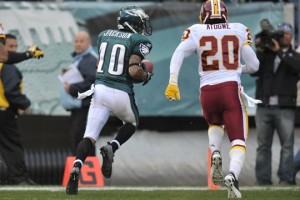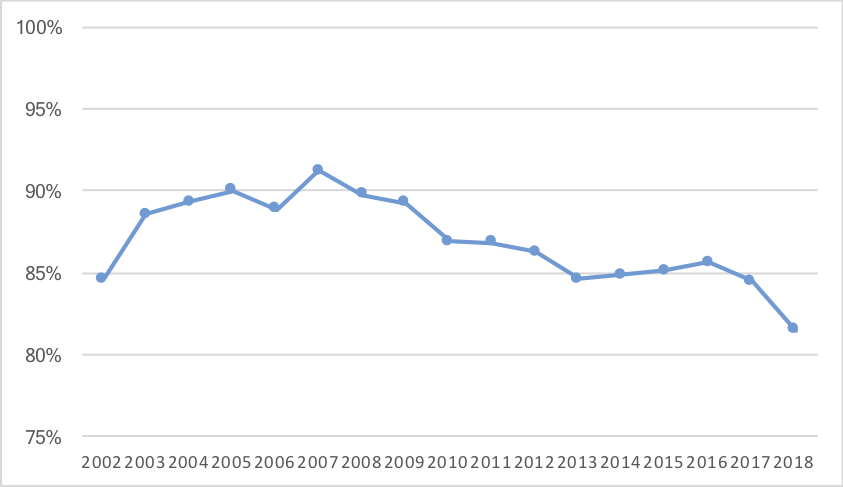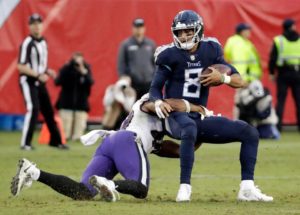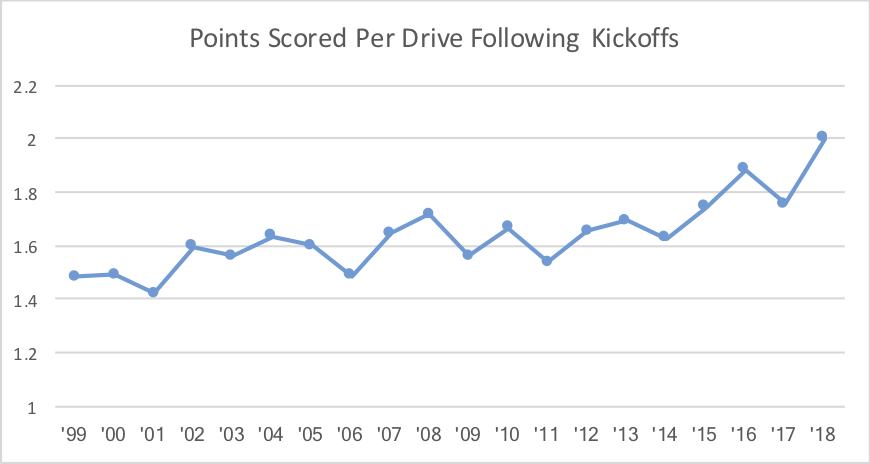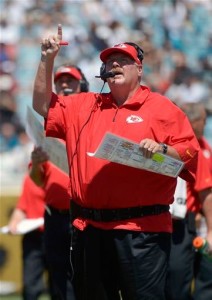In 2014, in Jackson’s first year with the Redskins, and playing with a rotating trio of quarterbacks in Robert Griffin, Kirk Cousins, and Colt McCoy, Jackson again led the league in yards per reception at 20.9.
In 2016, in Jackson’s final year in Washington, he teamed with Cousins to lead the NFL in yards per reception (17.9) for a third time.
Now, in 2018, alternating between Jameis Winston (15.2 YPC with 198 yards on 13 receptions) and Ryan Fitzpatrick (20.4 YPC with 552 yards on 72 catches), Jackson is once again leading the NFL in yards per reception (18.8).
How remarkable would it be for Jackson to lead the league in yards per reception for a fourth time in his career? He nearly picked up a fourth crown in his second season, when he was a runner-up to Mike Wallace in 2009. No player has ever led the NFL in yards per catch four times in their career, and Stanley Morgan (1979, 1980, 1981) and Jimmy Orr (1958, 1964, 1968) are the only players to even do it three times.
So Jackson is already in the discussion for best yards per reception player in league history, but what’s really impressive is his ability to maintain this skill in different environments. Morgan was on the Patriots all three years, in Ron Erhardt’s vertical offense, with Steve Grogan throwing over two-thirds of passes during those years, and Matt Cavanaugh starting 12 games. Orr teamed up with three different quarterbacks and two different teams (Bobby Layne in Pittsburgh in 1958, and Johnny Unitas in 1964 and Earl Morrall in 1968 with the Colts).
But Jackson will be with three teams, three coaches, and four different quarterback situations (not to mention, his performance in 2009 came with Donovan McNabb). Jackson is a remarkable deep threat not dependent on any quarterback, system, or coach. And now, he’s showing that age may not be a key variable, either.
The oldest player to lead a league in yards per reception was Henry Ellard, who averaged 19.5 yards/catch with the Redskins in 1996. No 34-year-old has done it, but Jimmy Orr (25.6 in the 1968 NFL) and Don Maynard (22.8 in the 1968 AFL) did it at age 33. A 32-year-old Joey Galloway led the league in yards per catch in Dallas in 2003 (19.8), and Elbert Dubenion (31 in 1964), DeSean Jackson (30 in 2016), and Malcom Floyd (30 in 2011) are the only other 30+ year old players to win the YPC crown.
Jackson’s performance has fallen with Winston in 2018, and his performance with Winston in 2017 led to the lowest YPC average of his career. We’ll see what happens over the final two games — Jackson is going to miss today’s game due to injury — but Jackson may be on the verge of a record-breaking season.

